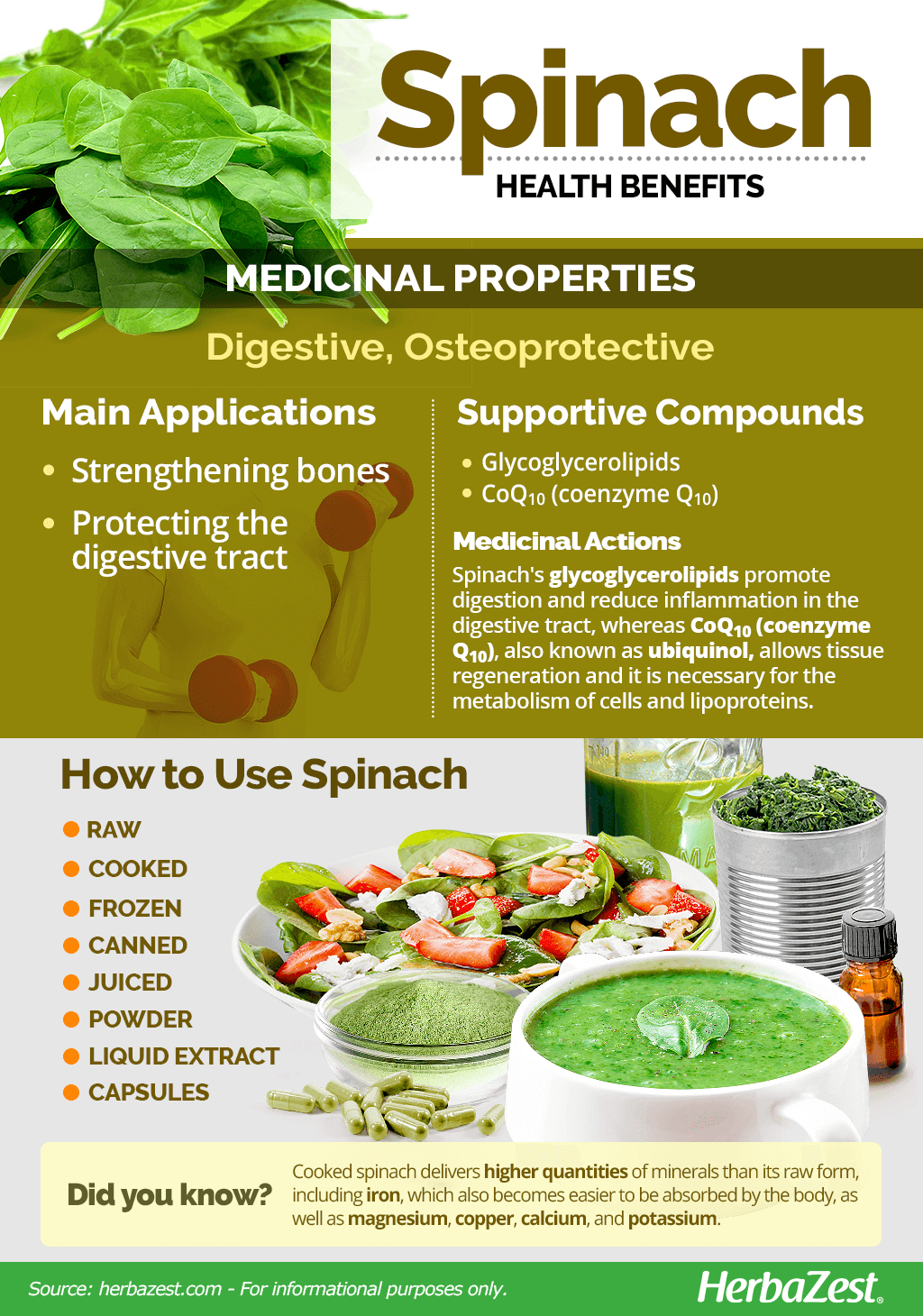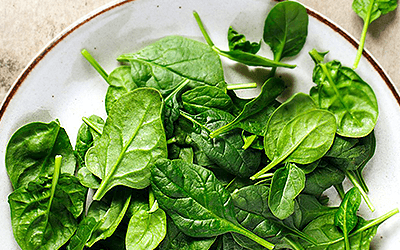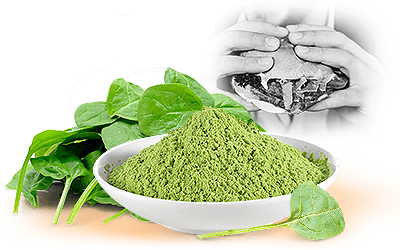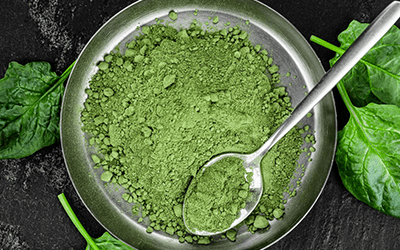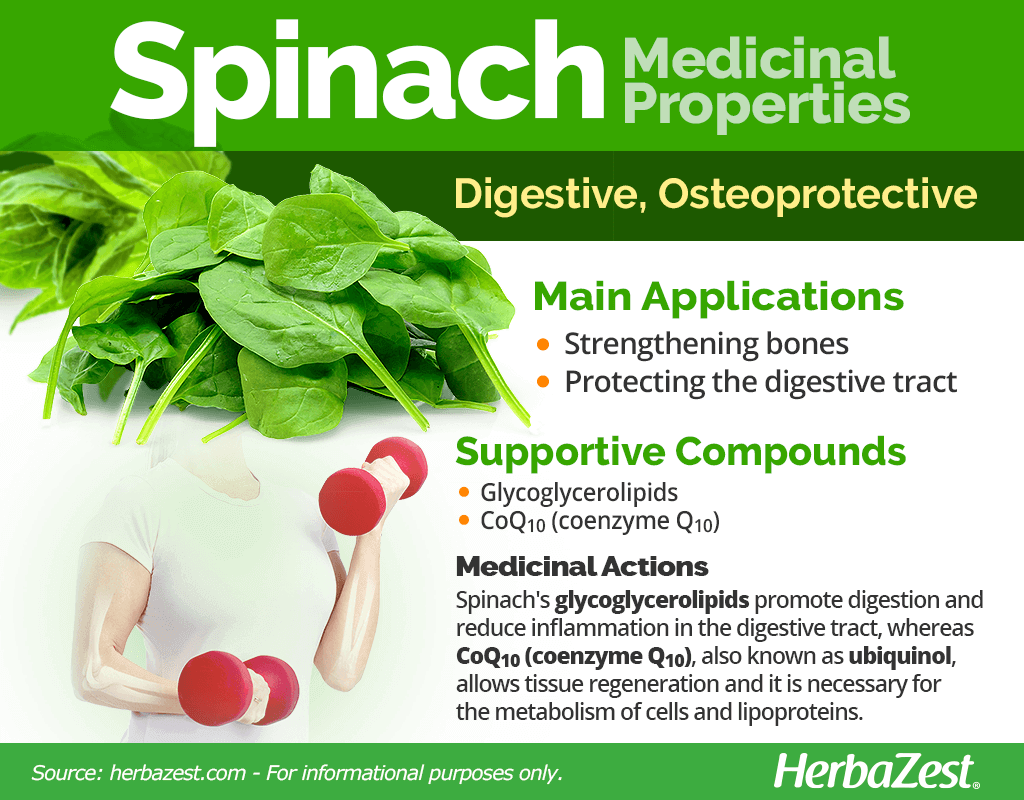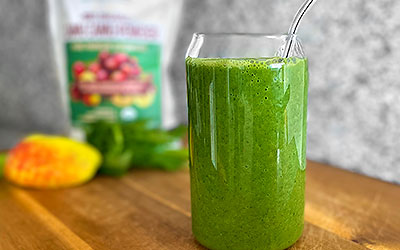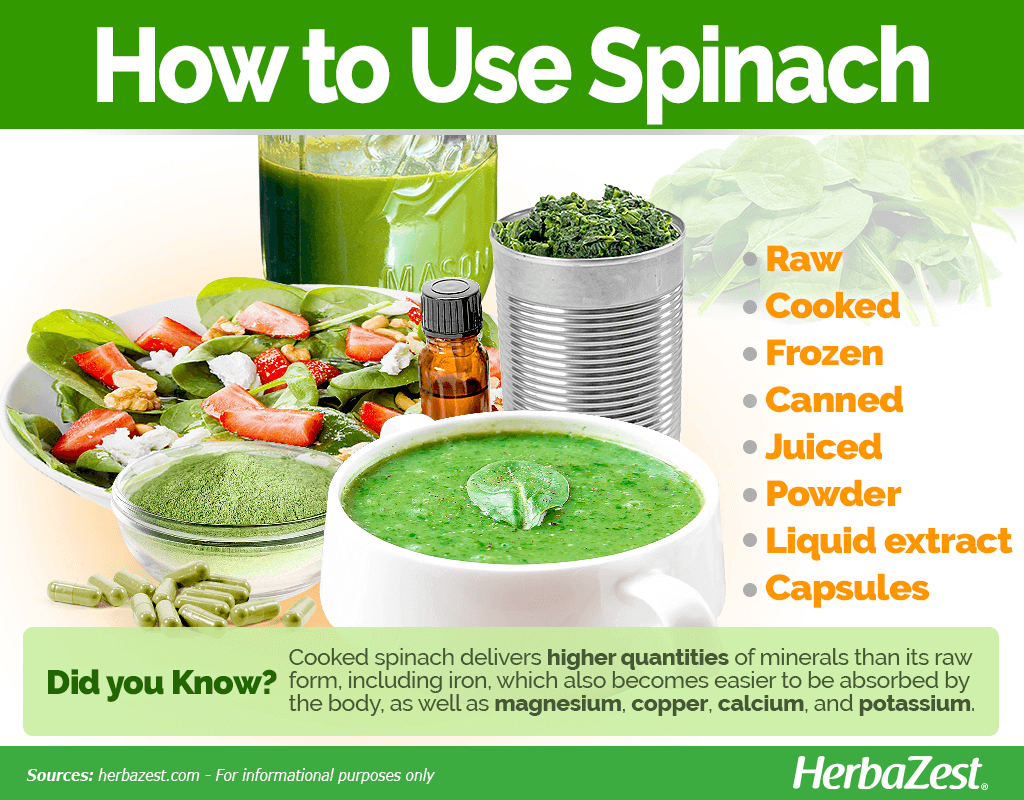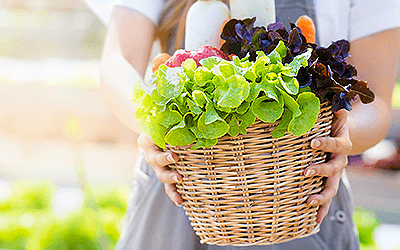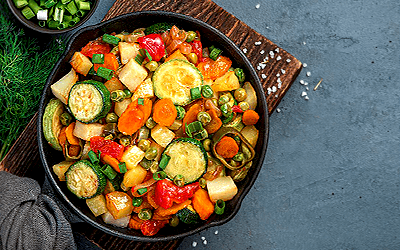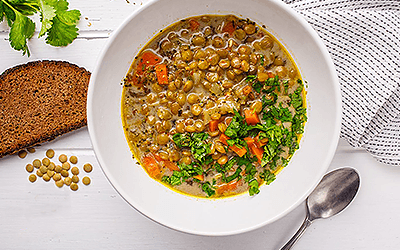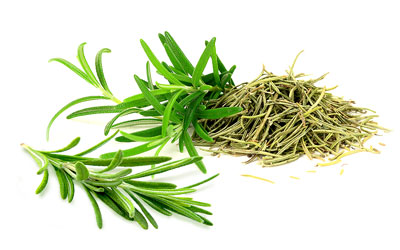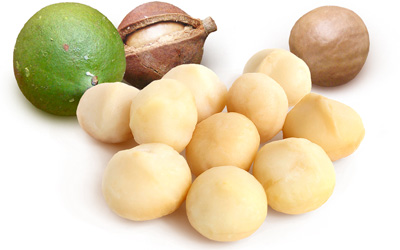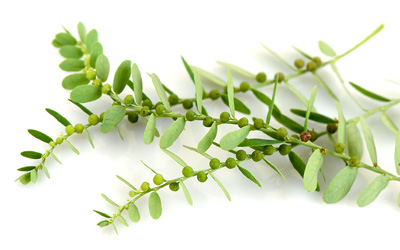Spinach is one of the most nutrient-rich foods in existence, and its reputation reflects its nutritional value. Although it experienced a boost in popularity during the thirties with the creation of the cartoon character Popeye, who used spinach to fuel his super strength, it was first cultivated at least 2,000 years ago in Persia (modern-day Iran). Today, spinach enjoys worldwide popularity, and is ranked 11th out of the 50 most popular vegetables in the United States.
Spinach Medicinal Properties
Health Benefits of Spinach
While spinach is largely valued for its nutritional content, it has also been found to possess healing qualities. The medicinal benefits of spinach have been shown effective for:
Strengthening bones. Eating spinach helps to reinforce bones and make them less susceptible to breaking.
Protecting the digestive tract. Along with promoting digestion and regular bowel movements, spinach leaves help prevent inflammation in the gastrointestinal tract.
How It Works
There are important bioactive compounds behind spinach properties. Glycoglycerolipids are essential for the process of photosynthesis in plants and some bacteria, promote digestion and reduce inflammation in the digestive tract. Spinach leaves additionally contains CoQ10 (coenzyme Q10), also known as ubiquinol, a naturally-occurring metabolic enzyme that allows tissue regeneration and is necessary for the synthesis and proper functioning of cell membranes and lipoproteins.
Spinach is also a great source of beta-carotene, a precursor of vitamin A, necessary for cellular regeneration and good eye health.
Digestive properties are also present in herbs like cinnamon and oregano, whereas chickpeas and almonds provide similar osteoprotective benefits.
Spinach Side Effects
Boiling spinach greatly reduces soluble oxalate content and is more effective than steaming and baking.
The consumption of spinach should be limited, because it contains fairly high levels of oxalic acid, an organic compound that may cause calcium deficiency or kidney stones in large doses. Symptoms of calcium deficiency include muscle spasms, brittle nails, and weak bones.
That being said, as part of a well-balanced diet spinach has no adverse side effects. Various studies indicate that the oxalic acid content of spinach doesn't significantly reduce calcium uptake from other foods. Only high amounts of spinach can create a nutritional problem.
Spinach Cautions
Spinach may interact with warfarin, an anticoagulant drug, so those taking this medication should avoid high doses of spinach. Recently, spinach has also been the subject of several recalls due to contamination by E. coli. To avoid falling ill, consumers should thoroughly clean or cook spinach before eating it.
Excessive consumption of spinach can cause calcification in the the heart and other health problems.
- Medicinal action Digestive, Osteoprotective
- Key constituents Vitamin K, glycoglycerolipids, CoQ10 (coenzyme Q10)
- Ways to use Capsules, Liquid extracts, Food, Powder
- Medicinal rating (4) Very useful plant
- Safety ranking Safe
Spinach Nutrition
Spinach has one of the highest concentrations of vitamin K, providing about four times the daily value for this important nutrient that aids coagulation, as well as the absorption of calcium (also found in the leaves), thus promoting bone strength. Spinach leaves are also an excellent source of vitamin A (as beta-carotene), necessary for immunity, as well as for skin and eye health; vitamin B9 (folate), which plays a key role in fetal development and red blood cells production; and manganese, important for carbohydrate metabolism, calcium absorption, and blood sugar regulation.
Eating both raw and cooked spinach provides great health benefits; however, the concentration of water-soluble nutrients, such as vitamin C and vitamin B9 (folate), while still present in good amounts, gets reduced when the leaves are exposed to heat. Nevertheless, cooked spinach delivers higher quantities of minerals, such as iron, which also becomes easier to be absorbed by the body, as well as magnesium, copper, calcium, and potassium.
100 grams of raw spinach provide 23 calories and 9% of the daily value for dietary fiber.
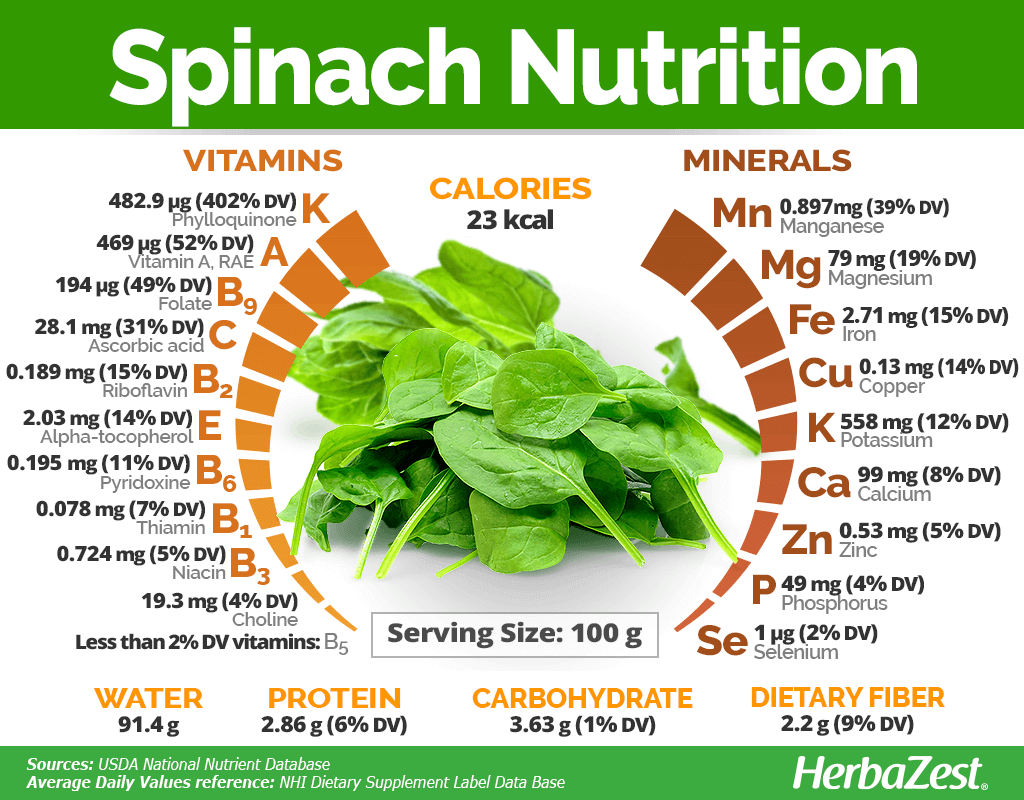
How to Consume Spinach
Spinach has very few forms of consumption outside of culinary preparations. Eating spinach is the easiest way to absorb its nutrients and benefit from its medicinal properties, so it is commonly used as an ingredient in the kitchen.
Natural Forms
For preparing culinary dishes, the spinach leaf is the favored part of the plant to be used. Stems are rarely used in any food.
Raw. Fresh, raw spinach leaves are often added to salads or sauteed before consumption and provide good amounts of both vitamin C and minerals.
Cooked. While spinach leaves lose some of their nutritional value when cooked, the process of cooking spinach can reduce the amount of oxalic acid present.
Frozen. Although not as nutritional as fresh spinach, frozen spinach retains its nutrients better when frozen than when kept at room temperature.
Canned. Canned spinach is the least nutritious form of spinach.
Juiced. Spinach can be made into juice or blended into a smoothie for a nutritional drink.
Powder. Dried and finely ground, spinach powder preserves the antioxidant properties of this herb but it ranks behind most culinary preparations in nutritional value.
Herbal Remedies & Supplements
Liquid extract. This form concentrates the chlorophyll content of spinach, as well as CoQ10, which is responsible for cellular regeneration and energy production. Add 20 - 30 drops to a glass of juice or water four times a day.
Capsules. Both spinach extract and powder can be found in capsule form, which allows for easier ingestion and better dosage control.
- Edible parts Leaves
- Taste Mildly bitter
Growing
Because of its specific temperature and moisture requirements, spinach can be a moderately difficult plant to grow. However, its leaves provide so much nutritional value that it is worth the effort for those who can create a garden environment in which spinach will thrive.
Growing Guidelines
Spinach seeds should be sown in well-drained soils that are also rich in organic matter. An ideal pH of 6.5 - 7.5 will generate the optimal growth.
It is advised to plant spinach four weeks before the average latest frost date and keep it at a temperature range of 50 - 60°F (10 - 15°C).
Spinach requires partial shade, so it should not be planted in an area that receives full, direct sunlight.
Leaves may be harvested periodically once a plant has at least six true leaves, or the entire plant may be harvested once it reaches maturity.
Spinach is a weak competitor and is very susceptible to weeds, so care should be taken to prevent weed growth around the plant.
Some pests may damage the spinach plant, including aphids, spinach leafminer, and slugs. Diseases can affect the plant as well, but several varieties with resistance to common diseases have been developed and are widely available.
Detailed information about growing spinach can be found in the herb garden section.
- Life cycle Annual
- Harvested parts Leaves
- Light requirements Full sun, Partial shade
- Soil Medium (loam), Well-drained
- Soil pH 6.6 – 7.3 (Neutral)
- Growing habitat Temperate climates
- Planting time Early spring, Late summer, Fall
- Plant spacing average 0.1 m (0.30 ft)
- Potential insect pests Aphids, Slugs, Leafminers
- Potential diseases Leaf spot, Rust, Anthracnose, Damping-off, Downy mildew
Additional Information
Plant Biology
Spinach is a leafy, flowering annual plant that can grow up to one foot (30 cm) tall. Its leaves vary in size from 1 - 12 inches (2 - 30 cm) and grow alternately on a round, reddish stem. Spinach leaves are oval to triangular shaped, and can be either smooth or curly. The plant's flowers are typically small and can range from green to yellow-green.
Classification
Spinacia oleracea is a member of the Amaranthaceae family, as well as the Chenopodioideae subfamily. This family is known for its leafy greens, and it also contains plants such as beetroot (Beta vulgaris), amaranth (Amaranthus spp.), and quinoa (Chenopodium quinoa).
Related Species and Varieties of Spinach
Many other species of leafy greens are colloquially called spinach, but none belong to the same genus as S. oleracea, nor do they possess all of the same benefits. These species include New Zealand spinach (Tetragonia tetragonioides), Malabar spinach (Basella alba), water spinach (Ipomoea aquatica), and Chinese or African spinach (Amaranthus gangeticus), all of which tolerate warm weather better than S. oleracea and are often used as culinary substitutes in warmer climates.
However, S. oleracea does have several different varieties or cultivars, many with resistances to different diseases. Each of these cultivars can be categorized into one of the following three types:
'Savoy'. This type of spinach has a wrinkly, curly leaf. It is often grown for local markets because of its appealing look and longer shelf life, but the leaf texture makes it harder to clean.
'Flat' or 'smooth leaf'. As its name implies, this type of spinach grows flat, smooth leaves. This variety is harvestable earlier than the savoy and its leaves are easier to clean, so it is often used for canning.
'Semi-savoy'. The semi-savoy variety is a hybrid between the savoy and the flat or smooth leaf variety. Its leaves are flatter than the savoy, but not as flat as the flat or smooth leaf.
Historical Information
Spinach has always enjoyed relative popularity, and its reputation has only grown over the years. It was first cultivated in the Middle East, most likely somewhere in Persia. It was introduced to China in the sixth century, and brought to Europe by way of Spain by the 15th century. In the United States, spinach has been a common crop since it was first cultivated on American soil in 1807.
Economic Data
Spinach is today considered a superfood, meaning that it is packed with vitamins and nutrients essential for one's health, so it enjoys a position of economic importance. The largest producer of the vegetable is China, but the United States is in second place. In 2014, the United States produced 772.6 million pounds (350.4 million kg) of spinach.
Popular Beliefs
Spinach is undoubtedly an excellent source of iron, but for many years, it was thought to be much more iron-rich than it truly is. Thanks to the miscalculations of scientist Dr. Emil von Wolf in 1870, spinach was believed to have an iron content 10 times higher than its actual level. Dr. von Wolf misplaced a decimal point when measuring the iron levels, and his mistake was only noticed 67 years later. In fact, many people today still mistakenly consider spinach to be richer in iron than it is.
In 1929, the cartoon Popeye the Sailor first ran in a newspaper's comics section. Popeye famously used spinach to give himself the super strength he used to beat the comic's villains. The cartoon gained so much popularity that the spinach industry credited it with boosting spinach sales 33% over the course of the thirties.
Other Uses
Cosmetics. The plant is rich in phytonutrients, vitamins, and minerals that are beneficial to hair and skin, so many facial masks and nourishing hair products contain crushed or blended spinach leaves.
Spinach is a healthy addition to any kitchen, as it is a food densely packed with several important nutrients. This leafy green vegetable can be found easily throughout the world and is highly valued for its medicinal properties, which promote digestion and bones health.
Sources
- Agricultural Marketing Resource Center, Spinach
- AYU - An International Quarterly Journal of Research in Ayurveda, Spinacia oleracea linn: A Pharmacognostic and Pharmacological Overview, 2010
- Better Nutrition
- Colorado State University, Extension, Colorado Spinach
- Cornell University, Growing Guide, Spinach
- Michigan State University, Greening your health with spinach
- Oregon State University, Linus Pauling Institute, Micronutrient Information Center, Coenzyme Q10
- The Encyclopedia of Nutrition and Good Health, p. 592
- The World's Healthiest Foods, Spinach
- United States Department of Agriculture, Economic Research Service, Commodity Highlights
- University of Arizona, College of Agricultural Sciences, Spinach Seed
- University of Florida, Extension, Eating Defensively: The Nutrition and Food Safety Benefits of Cooked Produce
- University of Wisconsin, Master Gardener Program, Spinacia oleracea
- USDA Nutrient Database, Spinach, cooked, boiled, drained, without salt
- Journal of Agricultural and Food Chemistry, Effect of different cooking methods on vegetable oxalate content, 2005
- Advances in Food and Nutrition Research, p. 142
